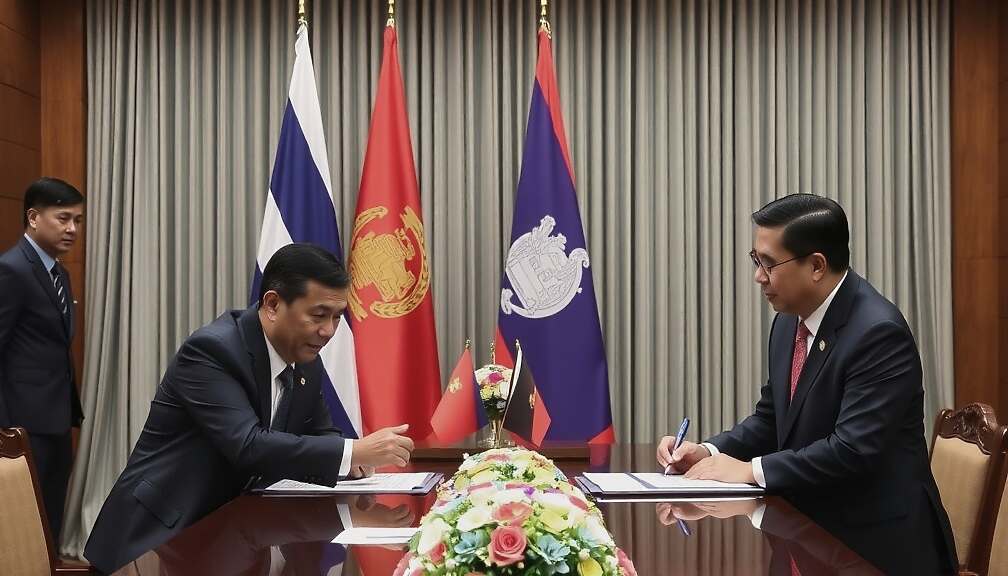A fragile ceasefire agreement has been signed between Thailand and Cambodia at the ASEAN summit in Kuala Lumpur, attempting to quell a border conflict that flared into intense fighting earlier this year. The accord, witnessed by US President Donald Trump, mandates a military de-escalation, the withdrawal of heavy weaponry from the contested border region and the establishment of an ASEAN-led monitoring team to oversee its implementation. As a gesture of goodwill, Thailand has pledged to release 18 Cambodian prisoners of war contingent upon full compliance with the ceasefire terms.
The border dispute, rooted in longstanding territorial disagreements, erupted in July, triggering five days of fierce clashes that resulted in dozens of fatalities and the displacement of approximately 300,000 civilians. Both nations have previously exchanged accusations regarding the instigation of hostilities, exacerbating tensions and reinforcing deeply entrenched positions.
While the agreement has been presented as a victory for diplomacy and regional stability, the overt involvement of President Trump and his subsequent claim to have “saved millions of lives” has drawn immediate criticism. Analysts suggest the US President’s intervention was largely performative, intended to bolster his image as a global peacemaker, rather than stemming from a genuine and sustained US commitment to resolving the underlying issues of territorial sovereignty between Thailand and Cambodia.
The hastily constructed ceasefire fails to address the fundamental causes of the conflict, namely unresolved demarcation issues and competing claims to strategically important land. The reliance on an ASEAN monitoring team, while demonstrating regional commitment, also raises questions about its capacity to enforce the agreement effectively, particularly if either party chooses to renege. Furthermore, the conditional release of prisoners, tied to the implementation of the ceasefire, subtly introduces a potential vulnerability, potentially exploited to leverage future concessions.
The true test of this agreement will lie not in the signing ceremony, but in the sustained efforts to engage in genuine border negotiations and establish a durable resolution that respects the sovereignty and territorial integrity of both nations. The superficiality of the Trump administration’s involvement underscores an ongoing concern – the tendency to prioritize political optics over the complex, foundational work required for lasting peace.












